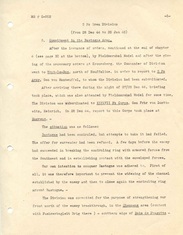Hello community
I’m currently working on a map + scenario covering the battle of Gerbini/Sferro Station in July 1943. Originally, I wanted to create a scenario for Combat Mission, but I’ve put it on hold for various reasons. Generally speaking, Command Ops lends itself much better to historical scenarios, without making too many adjustments for “fun” gameplay. Anyway, you can take a look in my research in the CM forum here: LINK.
Here is a screenshot of the current state of the map. It is still a work in progress and I plan to increase its size slightly. As you can see, I had to make some compromises with the height layers. I use height intervals of 20m for my altitude layers. Some of the higher mountains/regions in the north have to be cut off / flattened in return for a higher fidelity of the flatter terrain in the south.

As you would expect, the OOB for the Allies is easy to find. The OOB of the Axis not so much. But after some research, I’m confident that I got it as accurate as it can get. If you have any tips for me (in excess of the sources I’ve used – see the post below) I would be glad if you could share them with me!
As my research for the axis OOB for this particular scenario forced me to consider the bigger picture and the axis OOB for the whole of Sicily, I also have the intention to create further Sicily scenarios for COII, starting with Primosole Bridge + Catania and perhaps the battles of Sferro Hills and the Canadian push on the left flank, all of which are very close to the Gerbini battle both topographically and time-wise. In the long run, I’d also be looking at the US battles further to the northwest (e.g. Troina) and the landings (Gela counterattacks).
While I’m happy with the OOBs, the exact deployment/position of the forces – especially the Axis forces - at the start of the scenario has to be based on conjecture.
I’m planning to update this post with more information on the scenario in the future, so stay tuned.
I’m currently working on a map + scenario covering the battle of Gerbini/Sferro Station in July 1943. Originally, I wanted to create a scenario for Combat Mission, but I’ve put it on hold for various reasons. Generally speaking, Command Ops lends itself much better to historical scenarios, without making too many adjustments for “fun” gameplay. Anyway, you can take a look in my research in the CM forum here: LINK.
Here is a screenshot of the current state of the map. It is still a work in progress and I plan to increase its size slightly. As you can see, I had to make some compromises with the height layers. I use height intervals of 20m for my altitude layers. Some of the higher mountains/regions in the north have to be cut off / flattened in return for a higher fidelity of the flatter terrain in the south.

As you would expect, the OOB for the Allies is easy to find. The OOB of the Axis not so much. But after some research, I’m confident that I got it as accurate as it can get. If you have any tips for me (in excess of the sources I’ve used – see the post below) I would be glad if you could share them with me!
As my research for the axis OOB for this particular scenario forced me to consider the bigger picture and the axis OOB for the whole of Sicily, I also have the intention to create further Sicily scenarios for COII, starting with Primosole Bridge + Catania and perhaps the battles of Sferro Hills and the Canadian push on the left flank, all of which are very close to the Gerbini battle both topographically and time-wise. In the long run, I’d also be looking at the US battles further to the northwest (e.g. Troina) and the landings (Gela counterattacks).
While I’m happy with the OOBs, the exact deployment/position of the forces – especially the Axis forces - at the start of the scenario has to be based on conjecture.
I’m planning to update this post with more information on the scenario in the future, so stay tuned.
Last edited:
